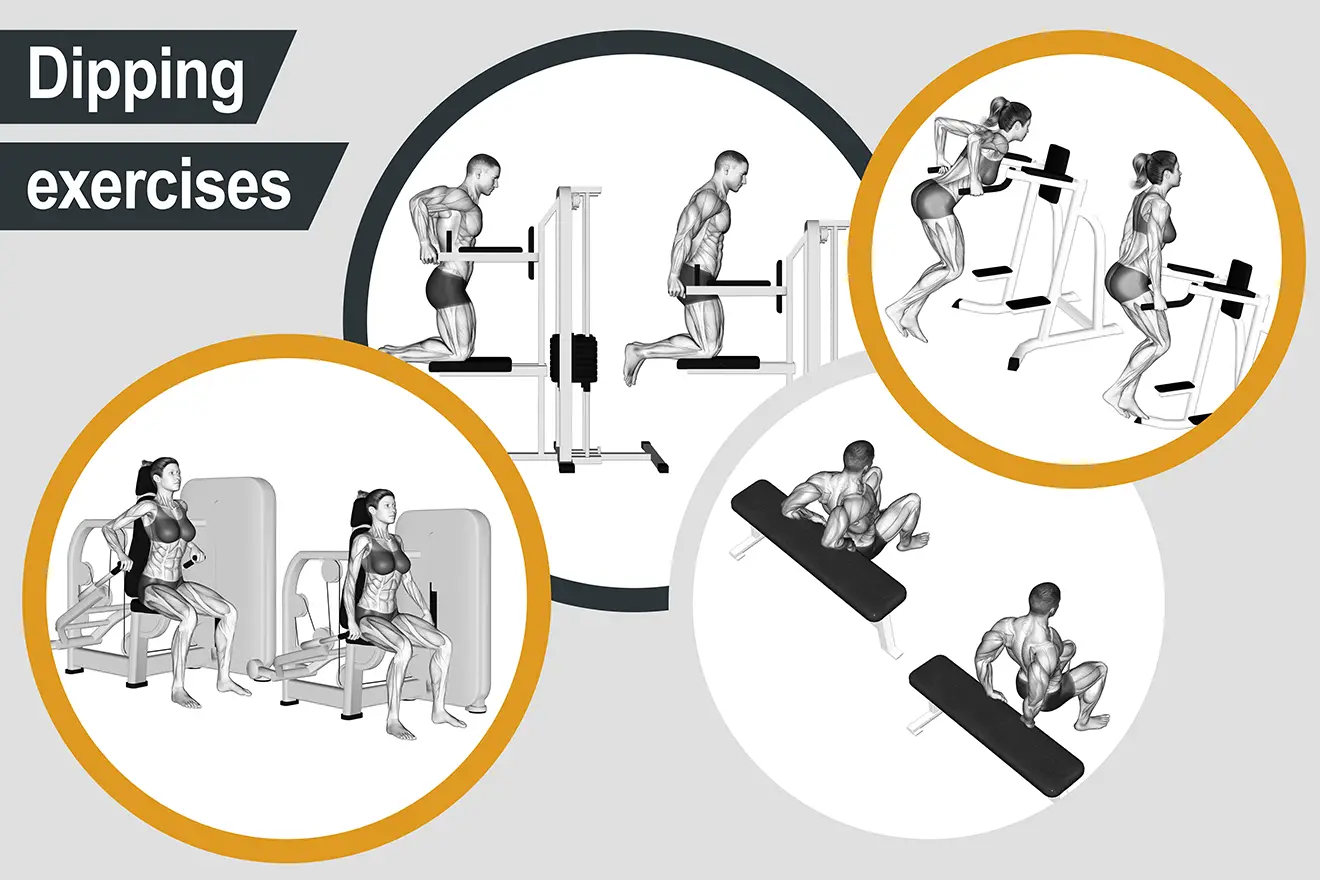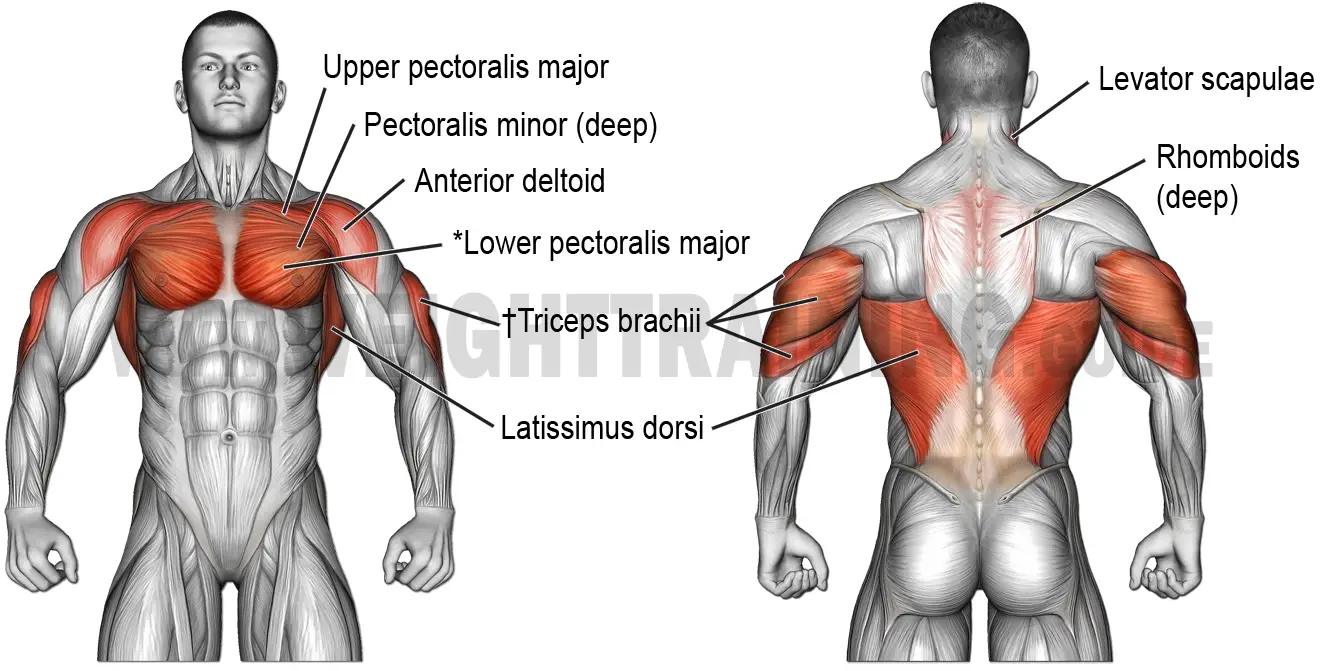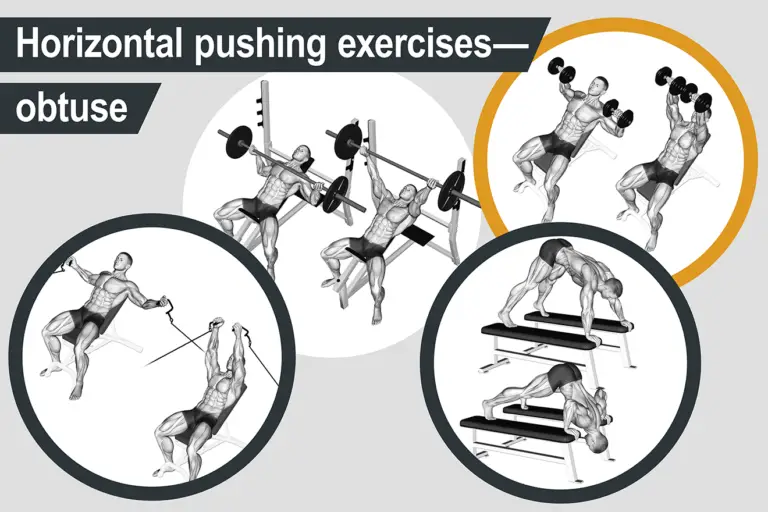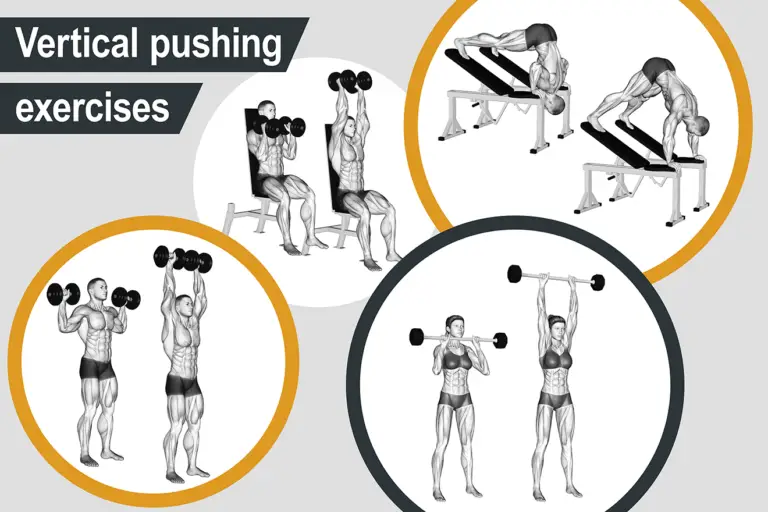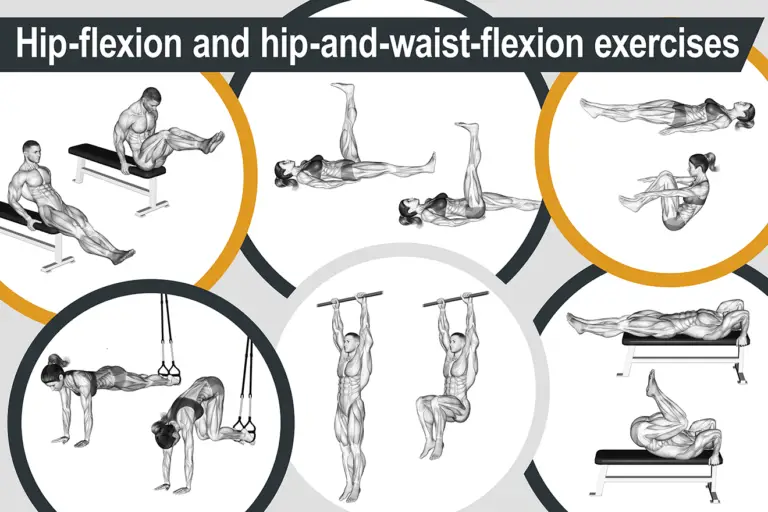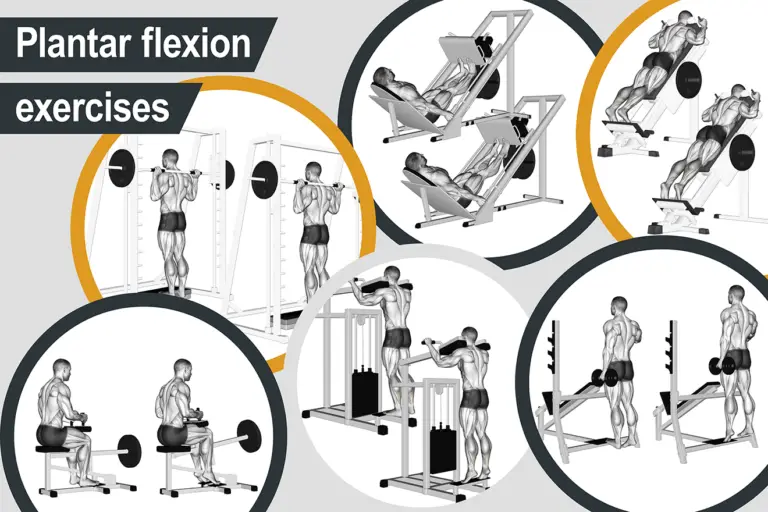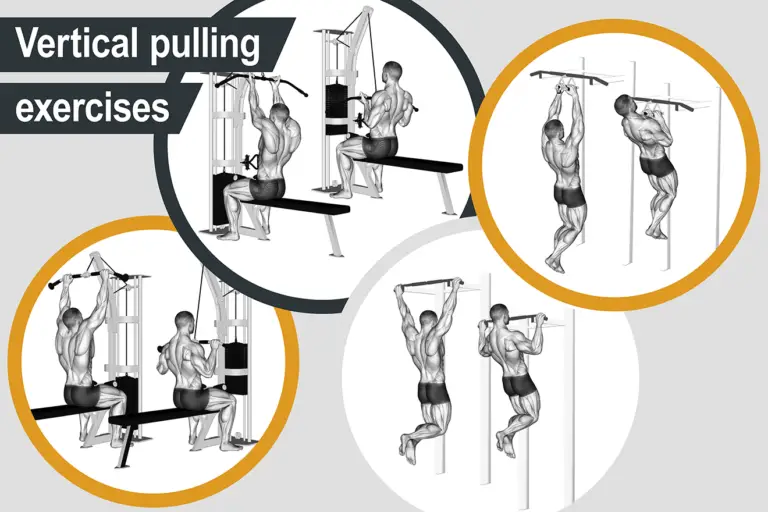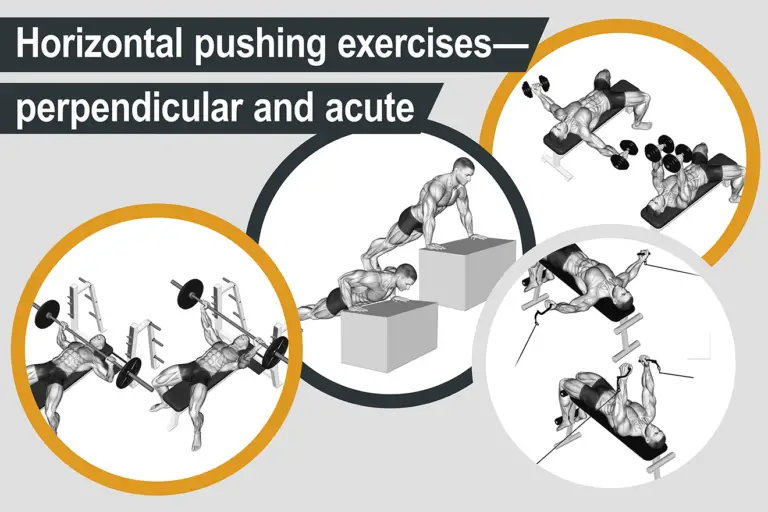Dipping exercises
Movement patterns and classification
Dipping exercises (for example, Figure 1) involve either mounting dip bars (or the edge of a stable surface, such as a bench) and pushing your body upward or sitting in a dip machine and pushing the machine’s levers downward. As two joints are involved (your shoulder and elbow), dipping exercises are classified as compound.
If you use a shoulder-width grip and keep your torso upright, as you would with any type of triceps dip or bench dip (for example, the machine-assisted triceps dip and the bent-knee bench dip; Figure 1, A and B, respectively), the dipping exercise will combine shoulder flexion with shoulder adduction and elbow extension. If you use a wide grip and lean forward, as you would with the chest dip (Figure 1, D), the dipping exercise will combine horizontal shoulder flexion with shoulder adduction and elbow extension.
Figure 1. Examples of dipping exercises. A. machine-assisted triceps dip; B. bent-knee bench dip; C. machine triceps dip; D. chest dip.
Muscle activation
All dipping exercises activate your triceps brachii, lower pectoralis major, upper pectoralis major, anterior deltoid, pectoralis minor, rhomboids, levator scapulae, and latissimus dorsi (Figure 2). If you use a shoulder-width grip and keep your torso upright, as you would with any type of triceps dip or bench dip, you will emphasize elbow extension and therefore target your triceps brachii. If you use a wide grip and lean forward, as you would with the chest dip, you will emphasize horizontal shoulder flexion and therefore target your lower pectoralis major.
Figure 2. Main muscles activated by dipping exercises. *The target if you use a wide grip and lean forward; otherwise, a synergist. †The target if you use a shoulder-width grip and keep your torso upright; otherwise, a synergist.

